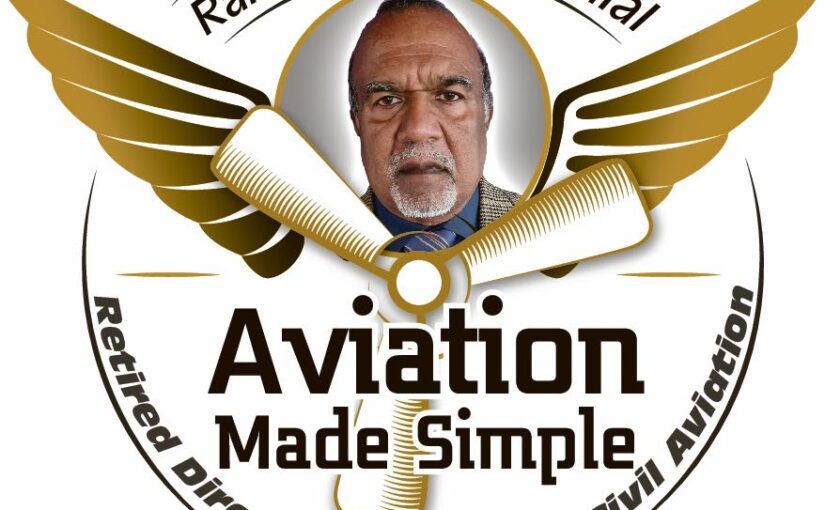In the glorious age of the Kamala Ascendency, the TSA is no longer restraining its contempt for American travelers. After squeezing millions of...
Vous n'êtes pas connecté
- English
- Français
- عربي
- Español
- Deutsch
- Português
- русский язык
- Català
- Italiano
- Nederlands, Vlaams
- Norsk
- فارسی
- বাংলা
- اردو
- Azərbaycan dili
- Bahasa Indonesia
- Հայերեն
- Ελληνικά
- Bosanski jezik
- українська мова
- Íslenska
- Türkmen, Түркмен
- Türkçe
- Shqip
- Eesti keel
- magyar
- Қазақ тілі
- Kalaallisut ; kalaallit oqaasii
- Lietuvių kalba
- Latviešu valoda
- македонски јазик
- Монгол
- Bahasa Melayu ; بهاس ملايو
- ဗမာစာ
- Slovenščina
- тоҷикӣ ; toğikī ; تاجیکی
- ไทย
- O'zbek ; Ўзбек ; أۇزبېك
- Tiếng Việt
- ភាសាខ្មែរ
- རྫོང་ཁ
- Soomaaliga ; af Soomaali
Rubriques :
 Maroc - EURASIAREVIEW.COM - A la une - 06/Sep 23:29
Maroc - EURASIAREVIEW.COM - A la une - 06/Sep 23:29
How The FAA Is Keeping Flying Cars In Science Fiction – OpEd
By Maxwell Tabarrok Flying cars are used as a synecdoche for all of the 20th-century sci-fi dreams that never came true. But they shouldn’t be grouped with moon cities or Dyson spheres. Private, point-to-point aircraft as cheap as a Chevy Tahoe could have been available decades ago. We should have them by now and could have them soon with a few regulatory changes. Many outright dismiss the idea of flying cars as impossible science fiction, but small, private, point-to-point aircraft are technologically possible and have been for nearly 100 years.Here is one prototype, the 1935 Pitcairn Autogiro, making a near-vertical landing on the National Mall while surrounded by a crowd and then driving to the Bureau of Air Commerce down the street. The fundamental physics and engineering of flying cars was not a constraint in the early 20th century, and it certainly isn’t now, as demonstrated by electric vertical-takeoff-and-landing (VTOL) aircraft like those made byBetaorJoby. A working prototype is one thing, but the economic constraints are tougher. Carl Benz invented the first recognizable car in 1885, but its impact was relatively small until Ford started mass-manufacturing the Model T 40 years later. Here too, the flying car could have succeeded. The manufacturing of planes was on an exponential curve upwards starting in the ’40s through to the late ’70s, similar to the path that automobile manufacturing had taken 20 years earlier. In 1979, 18,000 general aviation aircraft were shipped, up from under 4,000 in 1950. AFord Motors feasibility studyof the market potential ofMoulton Taylor’s Aerocar—one of the first practical flying cars—estimated likely production and sales of 25,000 units a year. A base model Cessna in 1980cost about $20,000. If that nominal price had tracked overall inflation, it would be around $80,000 today. The supply-side economics of flying cars were surmountable and were on a clear path towards affordable mass-manufacturing. The demand-side economics of flying cars weren’t a problem either. Beyond fulfilling the ancient human dream of flight, private, point-to-point aircraft are extremely economically valuable. There are more than15,000 flights a yearbetween Los Angeles and Las Vegas, with millions of passengers generating billions of dollars in revenue. At just over 200 miles, this is well within the range of small private aircraft, along with several of the otherbusiest domestic plane routeslike Los Angeles to San Francisco, Honolulu to Kahului, Atlanta to Orlando, and New York to Boston. Private, point-to-point aircraft can fly these routes without the security lines or thelast mile problem. Perhaps the easiest way to understand the economic potential of private, point-to-point aircraft is to imagine having the labor market of Manhattan and the housing market of Allentown. Keeping the high wages of NYC without paying the high costs can easily increase your income byseveral tens of thousands of dollars per year. Expanding the effective radius of cities, quickening inter-city travel, and offering access to the inherent joy of flight would more than justify a luxury car-level price tag on a flying car for many Americans. Despite dozens of successful prototypes over the past 100 years, early momentum in mass-manufacturing, and clear demand for the aircraft, flying cars never materialized, and theprivate aviation industry in general crateredto levels of production as low as those in the first decades of the airplane’s invention. Image Credit: Kamala I. Shetty and R. John Hansman This massive gap in small aircraft manufacturing needs explanation. Air traffic congestion, the higher skill floor of flying, and energy prices are real constraints that would have made it difficult for private aviation to grow as fast as automobiles did, but they can’t explain a modern rate of production that’s 30 times lower than what it was in the ’70s. Extraordinarily strict regulations on aircraft by the Federal Aviation Administration (FAA) are the clearest explanation for the absence of flying cars and the decline of aircraft manufacturing in general. There arethousands of pagesof meticulous rules governing everything in the lifecycle of an aircraft, but some stand out as massive drivers of cost. One ispilot training, where the FAA is a global outlier in requiring 1,500 instructor training hours compared to250 in most other developed nations. Even the lower grades of pilot license can costseveral tens of thousands of dollars. Another is the strict liability applied to aircraft. Thenational explosion of liability lawsuitsin the US through the ’60s and ’70s hit aircraft manufacturers particularly hard. The industry’sliability insurance premiums increased by nearly ten times, from $24 million to $210 million, from 1978 to 1980. There are also strict requirements for maintenance approvals on all general aviation aircraft afterevery 100 hours of flight. The procedures required for this maintenance and the certifications required of the person maintaining it also comprise dozens of dense pages in the Code of Federal Regulations (CFR). There are many other costly and unnecessary regulations on aircraft that have surely slowed their development. But none of these can fully explain the failure of flying cars. Thesection of the CFRdedicated to safety requirements for cars is longer than that for general aviation aircraft, and those regulations are not less meticulous in general. By far the costliest part of the FAA’s regulation is not any particular standard imposed on pilot training, liability, or aircraft safety, but a slight shift in the grammatical tense of all these rules. The Department of Transportation (DOT) sets strict safety requirements for cars, but manufacturers are allowed to release new designs without first getting the DOT to sign off that all the requirements have been satisfied. The law is enforcedex post, and the government will impose recalls and fines when manufacturers fail to follow the law. The FAA, by contrast, enforces all of its safety rulesex ante. Before aircraft manufacturers can doanythingwith a design, they have to get the FAA’s signoff, which can takemore than a decade. This regulatory approach also makes the FAA far more risk-averse, since any problems with an aircraft after release are blamed on the FAA’s failure to catch them. Withex postenforcement, the companies that failed to follow the law would be blamed, and the FAA rewarded, for enforcing recall. This subtle difference in the ordering of legal enforcement is the major cause of the stagnation of aircraft design and manufacturing. In some ways, this is an optimistic message, since it illuminates an attractive political compromise: keep all of the safety standards on airplanes exactly as they are, but enforce these standards like they’re enforced with cars—i.e., through post-market surveillance, recall, and punishment. This small change would reinvigorate the general aviation industry, putting it back on the exponential trend upwards that it lost 50 years ago. Restarting interest and innovation in small plane manufacturing would quickly lead to private, point-to-point aircraft coming onto the market. They would be expensive and clunky at first, just like the early cars of the 1930s. But competition and incremental improvements would quickly bring us to the 20th-centuryJetsonsdream that we should have fulfilled decades ago. Flying cars are within our grasp; we just have to reach out and take them. About the author: Maxwell Tabarrok is an Economics and Math graduate from the University of Virginia and a blogger at Maximum Progress, which covers topics in economics, mathematics, philosophy, history, and technology. Source: This article was published by FEE
Articles similaires
TSA Tyranny Goes Cutesy – OpEd
In the glorious age of the Kamala Ascendency, the TSA is no longer restraining its contempt for American travelers. After squeezing millions of...
Trump’s And Harris’ Differing Proposals On Chinese Tariffs – Analysis
By Alex Willemyns Ahead of November’s U.S. presidential election, trade with China has emerged as a major area of policy disagreement between...
Remembering the 9/11 attacks
Yesterday marked 23 years since the September 11 attacks, commonly known as 9/11, in which four co-ordinated Islamist terrorist suicide attacks were...
Trump's economic plans would 'concentrate more power' into a strongman presidency: analyst
Former President Donald Trump's economic agenda, particularly his proposal to replace income taxes with massive tariffs on foreign goods, has been...
The coat of arms debate
QUERULOUS chatter about the changing of the coat of arms rumbles on. Removing the famous three ships and replacing them with the steelpan divides...
Old satellite to burn up over Pacific in 'targeted' re-entry first
After 24 years diligently studying Earth's magnetic field, a satellite will mostly burn up over the Pacific Ocean on Sunday during a "targeted"...
Old satellite to burn up over Pacific in 'targeted' re-entry first
After 24 years diligently studying Earth's magnetic field, a satellite will mostly burn up over the Pacific Ocean on Sunday during a "targeted"...
The Regime’s Wars Are Built On Lies – OpEd
By Karen Kwiatkowski Americans are increasingly uneasy about their “national” security, and increasingly concerned that war is lapping at our...
The Regime’s Wars Are Built On Lies – OpEd
By Karen Kwiatkowski Americans are increasingly uneasy about their “national” security, and increasingly concerned that war is lapping at our...
Les derniers communiqués
-
Adobe Brings Conversational AI to Trillions of PDFs with the New AI Assistant in Reader and Acrobat
Adobe - 21/02/2024
-
Laura Frigenti takes the Helm as Chief Executive Officer of the Global Partnership for Education
Global Partnership for Education - 05/12/2022



